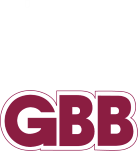Litter Surveys
The primary objective of GBB’s visible litter surveys is to determine the extent, rate, composition and probable origin of litter along streets, highways and other locales, using a unique stratified random sampling model. This model accounts for factors that influence litter, such as roadway type and adjacent land use, traffic volume, weather, income, county population size, distance to the nearest city, and the type and duration of litter control program effort.
This methodology has been utilized by GBB and the Institute for Applied Research (IAR) in 73 major litter surveys, including one that led to the now famous “Don’t Mess with Texas” campaign and others for the states of Mississippi, North Carolina and New Jersey. Based on the results of the surveys, GBB identifies the sources of litter and recommends strategies that help ensure a successful media campaign to reduce litter.
Project Examples
State of California
GBB conducted litter surveys using the Institute for Applied Research methodology at 75 beach sites along the California coast. These surveys were conducted for a confidential client. The standard IAR methodology was modified to include individual litter items with an area between one-half and one square inch. (Note: The standard IAR methodology surveys litter with an area greater than one inch.) This includes items such as cigarette butts. These small items were found to contribute a significant portion to litter. Other findings indicate that storm drain outfalls and off-shore sources, such as ships, also contribute significantly to beach litter. Wood and other organic material were found in significant quantities as well. Organics are of particular interest because of bioactivity in the ocean environment.
State of New Jersey
The primary objective of this survey was to determine the extent, rate, composition and probable origin of litter along New Jersey’s streets, highways and other locales, using a unique stratified random sampling model. This model accounts for factors that influence litter, such as roadway type and adjacent land use, traffic volume, weather, income, county population size, distance to the nearest city, and the type and duration of litter control program effort.
State of North Carolina
For the North Carolina Department of Transportation, GBB conducted a visible litter survey of 111 primary sites, plus four landfill access route sites. The survey found that North Carolina had a lower litter rate than the national average. The litter rate along the urban limited access roads (freeways) was approximately half the national average. The litter rate along urban streets is also below the national average except for all but the commercial streets. However, litter along rural freeways and other rural state highways was found to be higher than the average of other states surveyed. The 2001 study found that Adopt-a-Highway and Keep America Beautiful programs have reduced litter; however, litter rates are higher along rural local roads (state secondary roads) than for other states with comparable programs. Two thirds of all the litter encountered by motorists and pedestrians was estimated to be along rural freeways and other rural state highways. The Litter Survey is being used by the State of North Carolina to plan effective litter management programs in areas where litter management is most needed.
State of Mississippi
Conducted a visible litter survey of 104 primary sites, plus 9 landfill access route sites. The survey found that Mississippi has a fairly serious litter problem with litter rates along rural freeways and other rural state highways found to be about a third higher than the average of other states surveyed. Actually, about two thirds of all the litter encountered by motorists and pedestrians was estimated to be along rural freeways and other rural state highways. In contrast to rural freeways and roadways, urban freeways and streets had below average litter rates.





